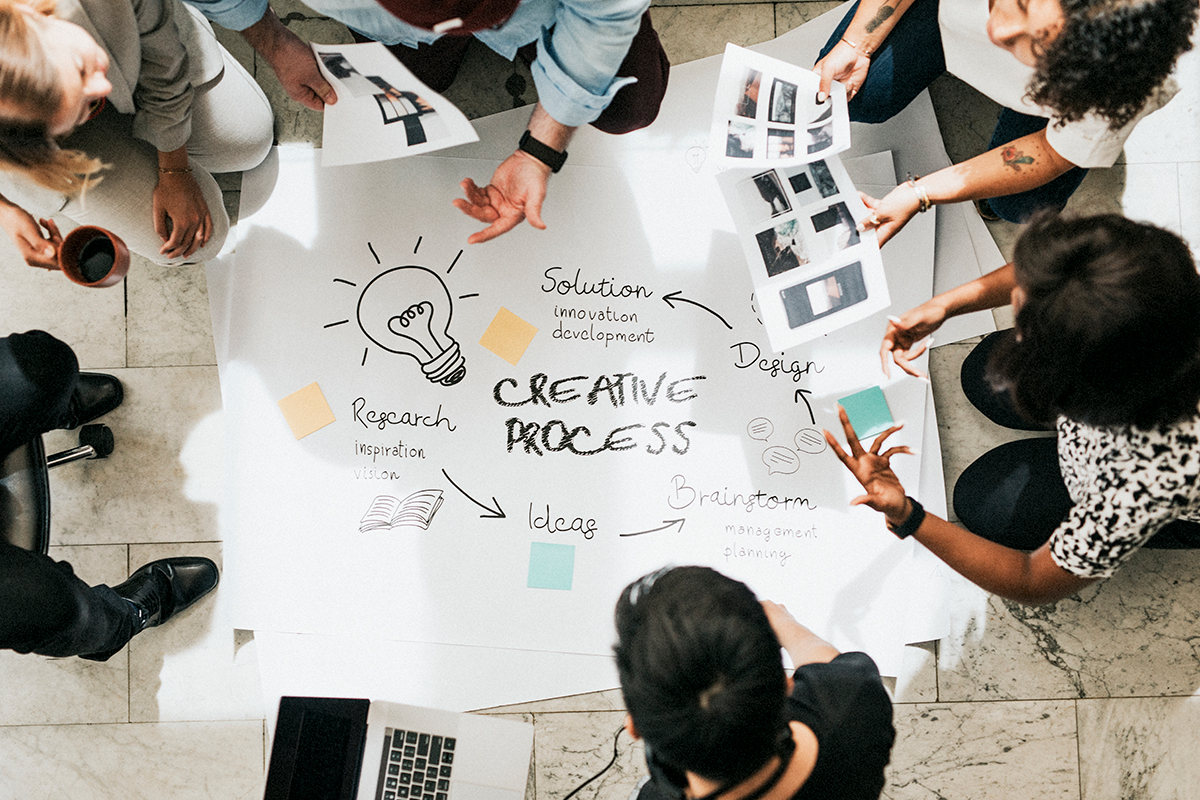Ever noticed how some people seem to get the best ideas out of others without anyone realizing it? It’s not magic—it’s a skill I call The Secret Facilitator. It’s all about guiding conversations toward more creative outcomes without making it obvious you’re in charge. Today, we’ll explore how subtle facilitation can spark innovation, improve teamwork, and unlock potential in intellectual property development.
What Is a Secret Facilitator?
Think of it this way: Being a secret facilitator is like steering a ship without the passengers noticing. The team feels in control, but you’re quietly guiding them toward breakthrough ideas. This kind of creative facilitation helps ideas flow naturally, encourages creative thinking, and keeps conflict at bay—without making anyone feel managed.
When done right, these techniques amplify creativity, whether you’re brainstorming with colleagues or making high-stakes IP decisions with clients. The beauty of it? People won’t even realize they’ve been facilitated. The key is balancing divergent and convergent thinking to generate innovative ideas and make smart decisions—critical steps in intellectual property development.
Why Use Creative Facilitation for Intellectual Property Development?
In many teams, people get defensive if they feel they’re being managed or evaluated. Traditional facilitation—where someone takes the lead, sets rules, or offers feedback—can stifle creative energy. Creative facilitation works differently. It allows collaboration to feel natural and spontaneous, ensuring ideas can emerge without unnecessary friction.
In group settings, extroverts often dominate discussions, leaving introverts in the background with ideas that never surface. A secret facilitator ensures that everyone’s voice is heard, giving introverts space to share their ideas silently, while still encouraging extroverts to participate fully. This balanced approach is especially useful when working on new inventions or brainstorming patent-worthy solutions.
Creative Facilitation Techniques for Intellectual Property Teams
- Diverging Silently
This technique is perfect for balancing diverse personalities in a group. Instead of having everyone share ideas out loud, ask participants to write them down first. Then, during a round-robin, each person shares their thoughts one-by-one. This method ensures that even quieter participants have a chance to contribute, and no idea gets lost in the shuffle. This technique is invaluable during intellectual property brainstorming sessions, ensuring all potential solutions are explored. - Preselected Categories
Imagine you’re working on a new patentable product. Instead of diving into a brainstorming free-for-all, first identify categories—like functionality, materials, or market applications. Then, have the group generate ideas within each category. This targeted approach focuses the discussion, leading to more refined outputs—exactly what’s needed when developing intellectual property strategies. - Withhold Your Best Ideas
Here’s a clever strategy: Keep some of your best ideas in reserve during the discussion. Let others take the lead while you jot down your thoughts privately. Later, you can share your insights at just the right moment, or follow up with an email listing additional ideas. This technique subtly positions you as a thoughtful contributor while allowing others to feel ownership of the conversation—an important dynamic when collaborating on IP projects.
Judgment-Free Zones for Innovation
One of the biggest barriers to creativity is early judgment. When someone hears, “That won’t work” or “We’ve tried that before,” the flow of ideas stops cold. A good secret facilitator ensures the conversation stays judgment-free, giving ideas time to develop before they are critiqued. You might say, “Why don’t we hold off on evaluating these ideas for now?” This approach is especially useful in intellectual property development, where even wild ideas can spark innovative solutions.
When a Manager Missed the Point
I once worked with a manager who struggled with creative facilitation. During a brainstorming session, he couldn’t resist evaluating every idea, saying things like, “Interesting, but not practical,” or, “That won’t work for us.” After a quick break, I explained the importance of deferring judgment. He did better in the second half—until the end of the session, when he privately told employees their ideas had “bombed.” His feedback undermined the entire exercise. Even well-meaning feedback, if poorly timed, can kill creativity. For intellectual property development, it’s crucial to let ideas breathe before passing judgment.
Building Fluency in Idea Generation
One of the most valuable skills in creative facilitation is fluency—the ability to generate many ideas quickly. Think of it as a mental workout. Try this: Take a random object, like a washer or a screw, and challenge yourself to come up with as many ideas as possible in 60 seconds. Most people will generate 7 or 8 ideas. With practice, that number can grow to 15, 20, or more.
This exercise builds creative endurance—essential for inventors and executives working on intellectual property development. The more ideas you generate, the greater the chances you’ll discover something patent-worthy.
The Secret Power of Silence
Silence can be one of the most powerful tools in a facilitator’s toolkit. If you’re usually the first to speak in meetings, try sitting back and observing instead. Let others take the lead, and when it’s your turn, offer a couple of thoughtful ideas. This approach allows others to shine, while you keep your ideas in reserve for the right moment—a strategy that’s especially useful in IP strategy meetings.
Unlocking Creative Potential with Facilitation
Creative facilitation isn’t just about managing discussions; it’s about unlocking the potential within every person in the room. By using techniques like silent brainstorming, preselected categories, and judgment-free discussions, you encourage your team to generate more ideas and make better decisions. This kind of facilitation is invaluable in intellectual property development, helping teams identify and refine their best ideas for patents or marketable innovations.
When you master the art of secret facilitation, you become the quiet force behind the scenes, ensuring collaboration runs smoothly and ideas flow freely. Whether you’re working with clients, leading a team, or brainstorming your next invention, these techniques will help you achieve more innovative outcomes—without ever needing to take center stage.
So next time you’re in a meeting, try being the secret facilitator. Guide the conversation without controlling it. Let the ideas flow, stay judgment-free, and see what happens. Whether you’re brainstorming with a team or developing a patent strategy, creative facilitation could be the key to unlocking your next big idea.


